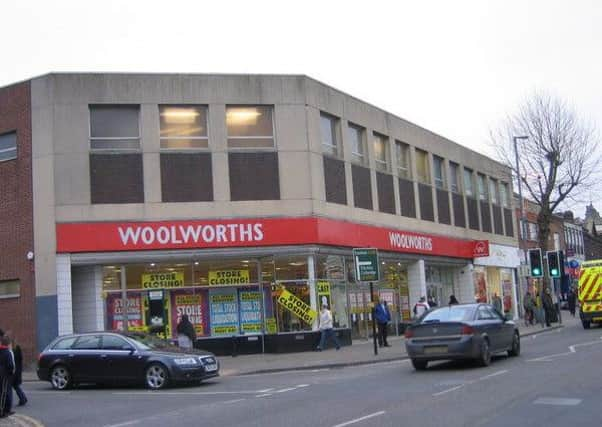The changing face of Scottish high streets


Retail’s so-called ‘digital pinch’ is turning out to be more of a punch as shoppers continue to buy online instead of on the high street.
The boss of department store giant House of Fraser today warned that plans to close 31 outlets and axe 6,000 jobs represent the “last viable” option to save the retailer, with the group at risk of collapse if the proposal is rejected.
Advertisement
Hide AdAdvertisement
Hide AdEdinburgh’s West End store is the only Scottish outlet poised to close under the proposed rescue deal as Scotland’s high streets continue to suffer in the era of digital shopping.
House of Fraser made a loss of £43.9 million in 2017 and early signs indicate 2018 may be another tough year for other retailers and big brands.
The lost stores of the Scottish high street
Woolworths and British Home Stores (BHS) once had pride of place on the high street until going bust in 2008 and 2016 respectively. Tammy Girl, a popular pre-teens fashion shop, disappeared even earlier when it was bought up by BHS in 2005.
Sport apparel retailers JJB Sports was another to go in 2012.
In the years preceding online streaming, Blockbuster Video was the go-to place for a Saturday night film rental and could be found in many town centres until it closed its doors in 2014.
C & A used to be a budget shoppers’ favourite prior to the rise of Primark. It closed in 2001.
Even Dixons, whose tagline was “The Future” closed most of its shops in 2006 after nearly 70 years in operation, while their rival Comet, once a pioneering discount warehouse, collapsed in 2012, a year after its owners sold the chain to OpCapita for a paltry £2.
One of the most famous high street collapses was Ratners jewellery chain which closed 330 stores in 1992 after the owner, Gerald Ratner, described one of his own products as “total crap” at a conference.
In recent years
Advertisement
Hide AdAdvertisement
Hide AdMany much loved brands today face an uncertain future with news of cuts, store closures and job losses a frequent fixture of the business pages. This year shoppers watched as Toys R Us and Maplin went into administration. Toys R Us shut down all its UK stores in March and there were 3,000 job losses.
They are not the only group struggling. Mothercare is set to close 50 of its stores, Carpetright has a programme of store closures, New Look said earlier in 2018 it would close 60 UK stores and cut 1,000 jobs and Poundworld have said this week it plans to close 100 stores placing 1,500 jobs at risk.
The Scottish Government have previously committed to a “high street first” policy but the effectiveness of this has faced criticism from opposition.
The Scottish Liberal Democrats economy spokesperson councillor Carolyn Caddick said: “The Scottish Government was supposed to have a ‘high street first’ policy but they have ignored it time and again, for example by closing police counters and moving courts out of town. The policy is evidently not working but these closures also reflect the wider economy and the fact that Scotland is growing at a much slower rate than the UK as a whole.”